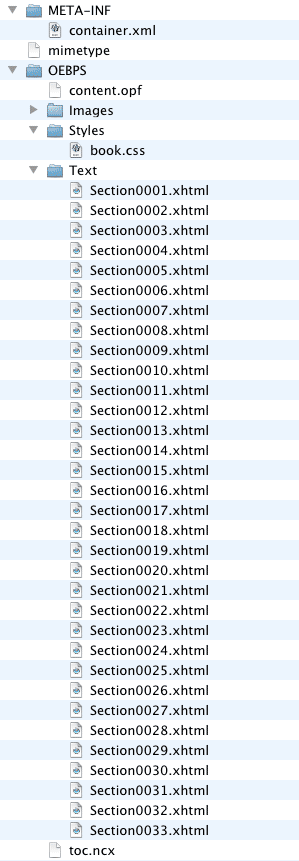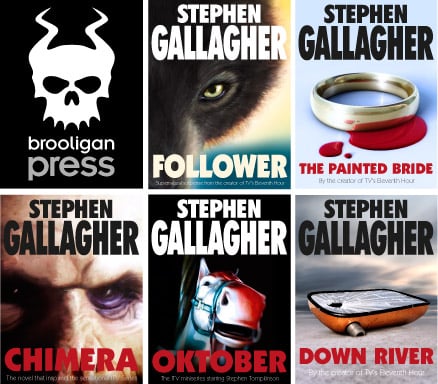A fiction ebook case study: from manuscript to Kindle publication.
Stephen Gallagher is a screenwriter,novelist and director who wanted to sell ebook versions of his novels on the Amazon Kindle store. This case study provides an outline of the process, from conversion and scanning of the original texts, through editing and layout, to final cover design and branding.
1: Preparation
The novels to be converted into Ebooks were available as manuscript, bound volume, and various formats of electronic file. The printed material was scanned and run through optical character recognition (OCR) software to produce electronic files. These were proof-read and corrected. The documents already on disk were checked and converted to current formats, a process more like archaeology when it came to the old Amstrad PCW files.
2: Conversion of electronic files
We now had the novels in Microsoft Word ready for conversion to Kindle format for submission to Amazon. The documentation for the Amazon Digital Text Platform (DTP) is rather confusing, with some sections contradicting others, or referring you to discussion forums for the answer to what you’d think is a simple question. After a while you’ll discover the Publish your Content topic which has information on uploading your document. Various document formats are supported, including Word, but it isn’t that easy. You can upload a Word format document and let Amazon do an automatic conversion, but the resulting ebook is likely to be a mess. The main text could be one long block rather than split into logical sections, meaning the ebook will be slow to load and might even crash the reader application. Formatting could be inconsistent, with unnecessary styling embedded within the text leading to strange display errors. The table of contents may have incorrect links, and your title, copyright and author information pages might not appear where expected. If you want a commercial quality ebook more work is required.
Ebook document structure is similar to a website, with each logical section held in an HMTL file. (It’s possible to indicate page break points within a single file, but separating the sections is more reliable. There’s also a size limit of 300k for individual files.) A simple stylesheet defines the overall look and is shared by the section files. Using the first novel on Steve’s list, The Painted Bride, I created a standard EPUB document. (We to start with this format and convert to Kindle later.) The title, copyright and author information page became separate files within this document, as did each chapter:

Each chapter was copied from the original Word document, converted to HTML and added to the EPUB document. Unnecessary formatting was removed as all styling within an EPUB document is best handled by a global style sheet. Generally, ebooks contain limited styling / presentation information. For example, the Kindle generally uses the same typeface so there’s no point specifying one beyond serif / sans-serif. The size of the text can be adjusted by the user so there’s no reason to specify absolute type size such as ’12pt’, and there’s no such thing as a standard ‘page’ size. After converting all the text from the novel we had a well structured EPUB document, ready for use on various readers and devices, or conversion to KFX format for the Kindle. However, it still needed a cover.
3: Cover image and branding
While Steve had the rights to each novel we weren’t allowed to re-use the print covers. Instead, we took this as an opportunity to create a new brand, with an imprint logo and consistent cover design:

Again, the Amazon DTP guidelines were inconsistent but we decided on image dimensions and produced two versions for each title. The cover image was added to the EPUB document, plus a larger version for use as the Amazon website product image.
4: Final conversion and uploading to Amazon
The other titles were converted to EPUB then KFX format and checked using the Kindle previewer application, the actual device and other readers. Once Steve was happy the final EPUB documents were uploaded to Amazon, along with the product image and appropriate information. After a couple of days the ebooks were available from the Kindle Store. These can be read on the Kindle device or using the Kindle App for Mac, Windows, iOS and Android. You can find out more about each title on Steve’s website: